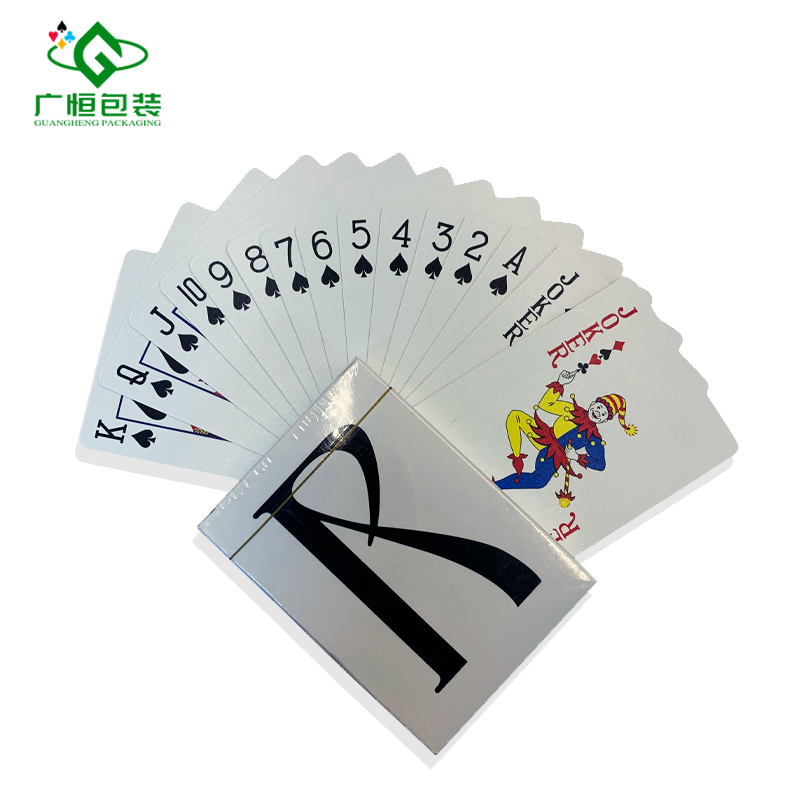Email format error
Email cannot be empty
Email already exists
6-20 characters(letters plus numbers only)
The password is inconsistent
Email format error
Email cannot be empty
Email does not exist
6-20 characters(letters plus numbers only)
The password is inconsistent

News
Why Is a Deck of Poker 54 Cards?
Poker refers to two meanings: one refers to playing cards; the other refers to games played with playing cards such as playing cards, called poker games, such as Texas Hold'em. A deck of playing cards has 54 cards, of which 52 are real cards and the other 2 are second cards (King and King).
The 52 real cards are divided into groups of 13, and each group is represented by four suits of spades, hearts, clubs, and diamonds. The 13 cards marked by Q and K have ever-changing ways of playing and a variety of ways to play.

The origins of poker
Poker is a paper tool that is popular all over the world for entertainment and gambling. Because of the different ways of playing, it is commonly known as Solitaire, Wanliu, Majid, etc., with different titles.
The origin of playing cards is not completely certain, but it is generally believed that it evolved from the French Tarot.
Early playing cards were probably introduced to Europe from Egypt at the end of the 14th century.
In the 15th century, the king was usually regarded as the highest card, and the ace was the lowest card. The current way of thinking of A as the largest and 2 as the smallest probably only started after the French Revolution in the late eighteenth century. "JOKER" was invented in the United States and then returned to Europe along with poker.
The origin of poker has a long history. People only know that poker came from foreign countries in Europe. In fact, paper toys originated in China.
As far back as the beginning of the ancient Zhou Dynasty, it is said that the young Zhou Chengwang and his younger brother Shuyu once played a game of "cutting the leaves of the tungsten to become the Gui" in the palace court. Paper was not invented at that time, so leaves were used as toys. In the Tang and Song dynasties, the ancestors of China invented a kind of card, which can be played or gambled, called "leaf play".
There is also a legend that in order to reduce the nostalgia of the soldiers, the general Han Xin invented a kind of playing card for entertainment in the army. Because it is only the size of a leaf, it is called a leaf play.
From the literati and bachelors to the common people, they all enjoy it. In the Ming and Qing dynasties, there were 40 cards in each deck of "leaf play" cards, which were divided into 4 categories. There are many patterns on the card, including figures, birds, animals, flowers, birds, insects, fish and so on. From the end of the Qing Dynasty to the Republic of China, playing cards were about 8 centimeters long and 2 centimeters wide, and people called them playing cards.
Before and after the founding of the People's Republic of China, card gambling was also popular among the Chaoshan people. The gameplay changed from a simple arrangement to a variety of games. Each card was painted with numbers from 1 to 10 points, or the "handsome, official, Xiang, Xiang, Xiang, Xiang, Xiang, Xiang, Xiang, Xiang, Xiang, Xiang, etc." were painted on each card. There are 32 characters such as cars, 4 colors of dividends, cyan, black and white, totaling 64 cards, as a permutation gambling. 2 to 4 people gamble in total.
Around the 13th century AD, this card game spread to Europe. After a period of time, the cards evolved into cards, and gradually formed a common playing card and became an international card.
The number of earliest playing cards varies from place to place. 78 in Italy, 32 in Germany, 40 in Spain, and 52 in France.
In the future, it will become an international poker deck with 52 cards, plus two "Joker" (also known as the big king or the big ghost), for a total of 54 cards. So far, the suits, points, and k, q, and j patterns on the playing cards are basically finalized.
There are four suits of playing cards, namely spades, hearts, squares, and clubs. The four suits have different names. The French call it "spear, heart, square, clove leaf", the German call it "leaf, heart, bell, acorn", and the Italian call it "sword, coin, stick, wine glass".
Later, according to the calendar in astronomy, Westerners unified the content of this card game card into 54 cards and four suits. In this way, after a long period of evolution, they gradually converged.
What are the ways to play poker?
There are many ways to play poker, the most common ones are bridge, playing percent, fishing for red dots, hitting one hundred, blackjack, 24, etc., to name a few. Since the number of poker cards conforms to the astronomical calendar, there is a saying that poker is the epitome of the calendar. The reasons are:
There are 54 playing cards, representing 52 weeks in a year. The two second cards, the big cat, represent the sun, and the kitten, the moon; the peach, heart, square, and plum represent the four seasons of spring, summer, autumn, and winter. The red cards represent day, the black cards represent night; the 13 weeks of each season and the number of cards in each suit of poker are exactly 13, and the sum of the points of 52 cards is 364, plus one point of the kitten, it is 365, It is the same number of days as a normal year; if you add a little more cat, it is exactly the number of days in a leap year. There are 12 cards of K, Q and J in playing cards, which not only indicate that there are 12 months in a year, but also indicate that the sun passes through 12 constellations in a year.
Conclusion
If you are looking for a Black Core Paper Poker Cards manufacturer,Plastic Professional Poker Playing Cards manufacturer,Plastic Poker Cards manufacturer, we hope we will be your best choice.

